I'm looking to build a code to make a number show up 50% of the time, 35% of the time and 15% of the time. I'm quite new to BGscript but I haven't had much luck making this reliable or work at all. Even if you haven't done any BGscript but have done this in an other language. That would be really great!
Asked
Active
Viewed 586 times
0
-
Exactly those percents, or just on average around that? Is the list of these 3 numbers going to always be divisible by a number allowing for these exact percentages, if not, create a sudo random number from 1 to 100, if > 50, show number 1, < 35 show number 2, else show number 3. – rich green Mar 26 '15 at 19:52
-
Generate a random integer between 0 (inclusive) and 100 (exclusive) from a uniform distribution. If it is less than 50 then return alternative A; else if it is less than 85 return alternative B; else return alternative C. – John Bollinger Mar 26 '15 at 19:53
-
I googled random number generator and there doesn't seem to be one in BGScript, but this link might help. https://bluegiga.zendesk.com/entries/29185293--BGScript-spp-over-ble-AT-command-SPP-implementation-for-BLE – rich green Mar 26 '15 at 20:09
-
Yeah, there is def no random number generator for BGscript. I would like to get as close to though number as possible. Basically, i have a unit that if you press the button vibrates, blinks a led or makes a beep. I want to have the vibrate go on 50 percent of the time if the button is pressed, than 35 percent led goes on if pressed and 15 percent the beep goes off if pressed. Seem really simple but my head is up somewhere else today! – Dan Rondeau Mar 26 '15 at 21:13
1 Answers
0
I've written a blog post and example code for generating a random unsigned int in BGScript here: http://www.sureshjoshi.com/embedded/bgscript-random-number-generator/
Essentially, it uses a xorshift seeded by the module's serial number and/or the ADCs LSB noise to generate a pseudo-random number.
# Perform a xorshift (https://en.wikipedia.org/wiki/Xorshift) to generate a pseudo-random number
export procedure rand()
t = x ^ (x << 11)
x = y
y = z
z = rand_number
rand_number = rand_number ^ (rand_number >> 19) ^ t ^ (t >> 8)
end
and initialized here:
# Get local BT address
call system_address_get()(mac_addr(0:6))
...
tmp(15:1) = (mac_addr(0:1)/$10)+ 48 + ((mac_addr(0:1)/$10)/10*7)
tmp(16:1) = (mac_addr(0:1)&$f) + 48 + ((mac_addr(0:1)&$f )/10*7)
...
# Seed the random number generator using the last digits of the serial number
seed = (tmp(15) << 8) + tmp(16)
call initialize_rand(seed)
# For some extra randomness, can seed the rand generator using the ADC results
from internal temperature
call hardware_adc_read(14, 3, 0)
end
event hardware_adc_result(input, value)
if input = 14 then
# Use ambient temperature check to augment seed
seed = seed * (value & $ff)
call initialize_rand(seed)
end if
end
The 'randomness' of the generator can be viewed in this scatterplot - no obvious trends at a glance.

Once you have that, you can do similar to what Rich and John recommended by setting 'if' checks to generate your distribution. Please note that this code does not offer up a min/max value to generate a random between (due to not currently having a modulo implementation in BGScript).
Pseudo-code might be:
call rand()
if rand_number <= PROBABILITY1 then
# Show number 1
end if
if rand_number > PROBABILITY1 and rand_number <= PROBABILITY2 then
# Show number 2
end if
if rand_number > PROBABILITY2 then
# Show number 3
end if
SJoshi
- 1,866
- 24
- 47